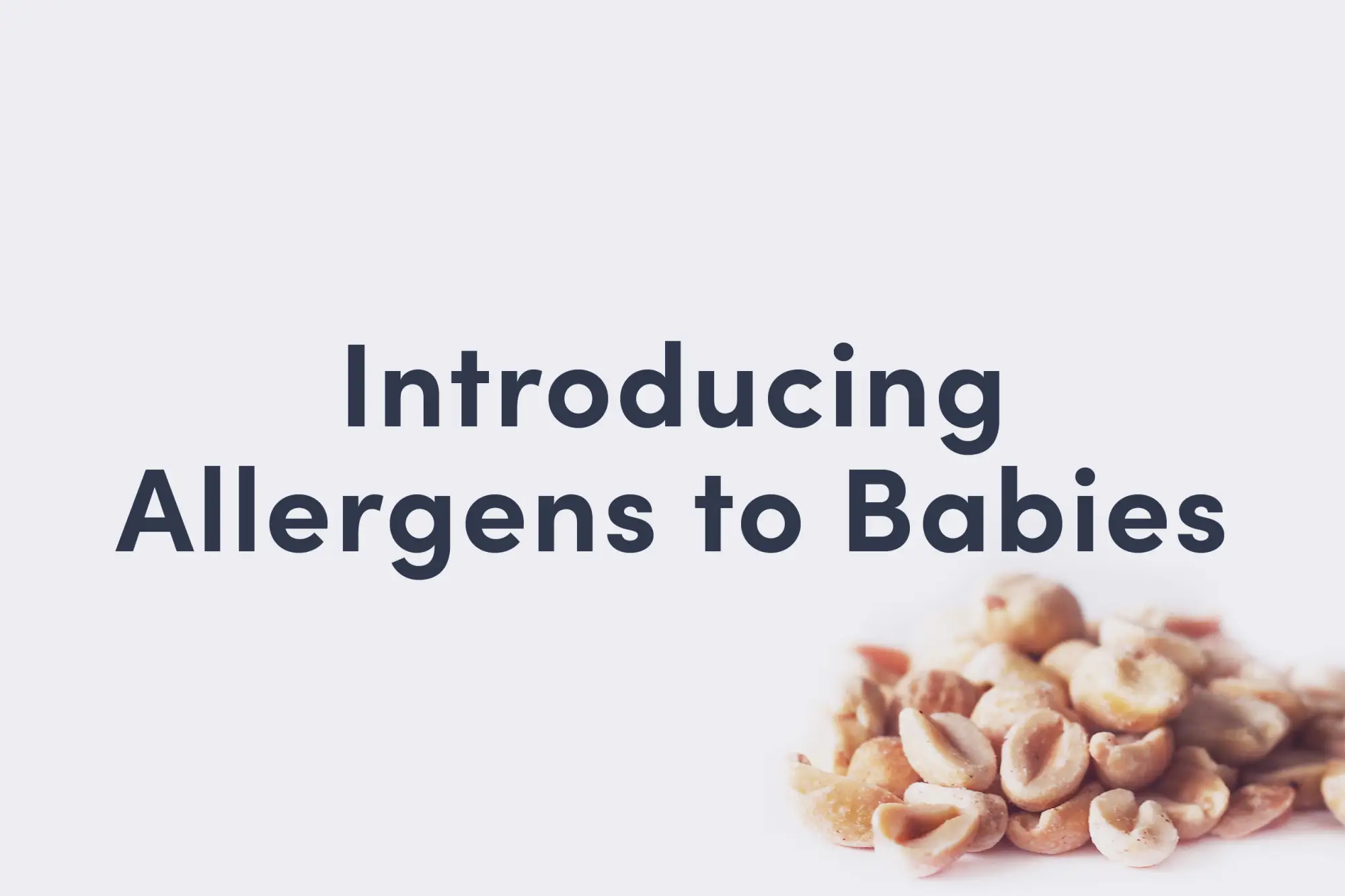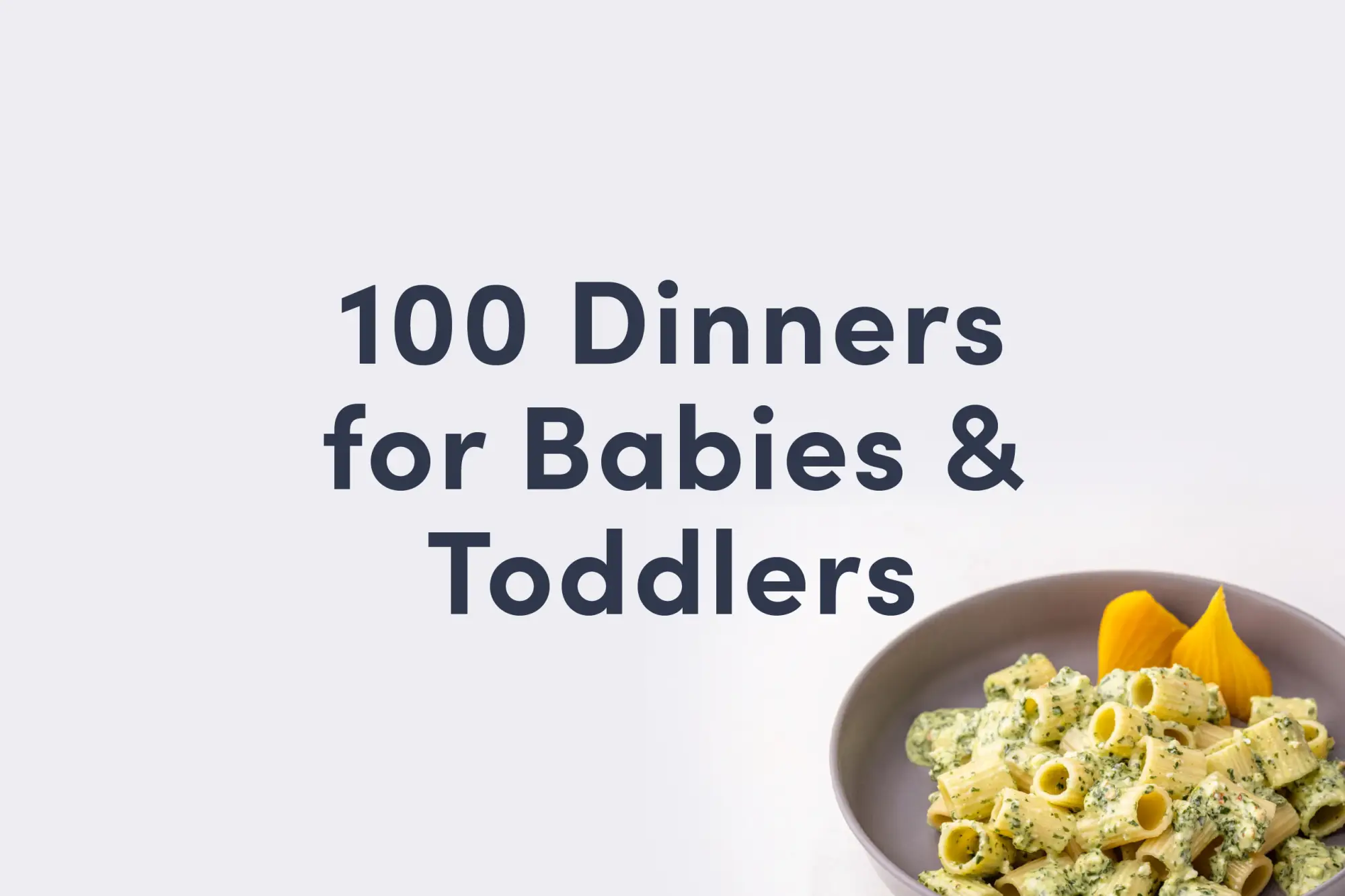Crab
Shellfish
Age Suggestion
6 months
Iron-Rich
No
Common Allergen
Yes

Warning
Cook crab thoroughly before serving to babies. Crab carries an elevated risk of foodborne illness, and babies are more at risk for severe symptoms.
When can babies have crab?
Crab, when well-cooked, may be introduced as soon as baby is ready to start solids, which is generally around 6 months of age.
Crabs are crustacean shellfish, with thousands of distinct species living in bodies of fresh and salt water all over the world. From tiny crabs that are difficult to see with the naked eye to enormous crabs measuring nearly 12 feet (3.6 meters) across, the crab family is diverse, but like their cousin the lobster, all crabs have a hard shell that they constantly shed and regrow throughout their lifetime. While the shell is re-growing, it is soft to the touch, and some crabs (such as shore crabs and blue crabs) are commonly eaten during this phase.
Is crab healthy for babies?
Yes. Crab offers protein and omega-3 fatty acids, as well as calcium, choline, folate, magnesium, potassium, selenium, zinc, and vitamins B6, B12, and E. Together, these nutrients support baby’s growth, development, bone density, brain function, electrolyte balance, taste perception, metabolism, immunity, and more.
Should I be worried about the cholesterol content of crab?
Fortunately, no. Even though crab is rich in cholesterol, research has shown that cholesterol from foods has little impact on overall blood cholesterol levels for the majority of people. Cholesterol management is also not a common concern for babies and young children. Lastly, crab is rich in omega-3 fatty acids, which can help promote overall healthy total cholesterol and lipid levels in the body.
Is crab high in sodium?
It can be. Fresh and frozen crab are typically the lowest in sodium, while canned, imitation, and other processed crab products tend to contain more sodium. While crab can be high in sodium, the amount of sodium that babies eat tends to be low as they learn the skills to feed themselves, and some sodium is important for supporting baby’s electrolyte balance, hydration, and movement.
Is crab a common allergen?
Yes. Crab is a type of crustacean shellfish, which is classified as a common allergen by the World Health Organization. Individuals with crab allergy are more likely to experience reactions to other shellfish in the crustacean shellfish family (crawfish, lobster, shrimp, prawn) and, to a lesser degree, the mollusk shellfish family (clam, mussel, octopus, oyster, scallop, snail, squid) families. Interestingly, crustacean shellfish allergy commonly develops in adulthood, and for those who develop it in childhood, most will not outgrow it. If you suspect baby may be allergic to shellfish, consult an allergist before introducing crab.
Note that imitation crab (surimi) can contain a number of common allergens, such as egg, finned fish, sesame, soy, and wheat. Read the ingredients when shopping for imitation crab.
Being allergic to shellfish doesn’t mean that an individual will also have a finned fish allergy, as they are not closely related. However, you may need to be careful about the risk of shellfish proteins cross contaminating finned fish and other seafood, as they are often prepared in the same facilities using shared tools and cooking materials.
Crab may be preserved with sulfites. While sulfites are not a common allergen, certain individuals, particularly those with asthma, can have allergy-like reactions to added sulfites. If sulfites are a concern, avoid ingredients such as sulfur dioxide, potassium bisulfate, potassium metabisulfite, sodium bisulfite, sodium metabisulfite, and sodium sulfite to name a few.
As you would do with all new allergens, introduce crab by serving a small quantity at first, and watch closely for signs of any adverse reaction. If all goes well, gradually increase the quantity over future meals.
Once successfully introduced into the diet, common food allergens like crustacean shellfish should be ingested regularly (at least once weekly, if possible) throughout the toddler years. However, as the crustacean shellfish are closely related, it is not necessary to serve each different variety of shellfish separately - simply serve what is most accessible to you locally.
Is crab a choking hazard for babies?
Yes. While crab can be soft and tender, it can also be chewy, round, and slippery, which are qualities that can increase choking risk. To reduce the risk, ensure that the shell is fully removed, consider boiling or steaming the crab to help the meat stay tender, and prepare and serve crab in an age-appropriate way as described in the How to Serve section. As always, make sure you create a safe eating environment and stay within an arm’s reach of baby during meals.
Learn the signs of choking and gagging and more about choking first aid in our free guides, Infant Rescue and Toddler Rescue.
Videos
When can babies have canned crab?
Canned crab may be offered as soon as baby is developmentally ready for solids, typically around 6 months of age.
When can babies have imitation crab (surimi)?
Baby can have a taste here and there as soon as they are developmentally ready for solid food and once any relevant allergens in imitation crab have been introduced on their own and an allergy has been ruled out. Imitation crab is often made of finned fish (typically pollock), egg, soy, and/or wheat, all of which are common food allergens.
When can babies have raw crab?
There is no age at which eating raw crab is without risk, so whether or when to serve it is a personal decision for which you must make an informed decision in the context of your child. Raw crab poses a high risk of foodborne illness, especially salmonellosis and vibriosis, which are harmful bacterial infections for babies, children, and adults alike, with more risk of severe symptoms in babies. Cooking shellfish like crab to an internal temperature of 145 F (63 C) helps to kill concerning bacteria in the food.
When can babies have crab fat?
There is no age at which eating crab fat is without risk, so whether or when to serve it is a personal decision for which you must calculate risk. The hepatopancreatic organ, also known as brown meat, crab fat, crab mustard, or tomalley, tends to accumulate whatever toxins or contaminants that exist in the crab’s environment, so many health advisory groups strongly recommend that people of all ages avoid consuming this organ. If where you live offers more specific guidance for when adults and children can eat crab fat based on conditions specific to that region, feel free to defer to those recommendations.
How do you serve crab to babies?
Every baby develops on their own timeline, and the suggestions on how to cut or prepare particular foods are generalizations for a broad audience.
6 months old +:
Serve cooked, finely chopped or shredded crab meat, shell removed, and mixed into soft, scoopable foods like mashed avocado, mayonnaise, or mashed vegetables, or offer a crab cake for baby to munch on as long as it is larger than baby’s mouth, moist, and soft. Avoid serving any pieces of crab that are still rounded to reduce choking risk.
9 months old +:
Offer cooked shreds of crab meat, shell removed, on their own for the child to pick up with their developing pincer grasp, or mix finely chopped or shredded cooked crab meat into scoopable foods like mashed avocado, mayonnaise, or mashed vegetables. Avoid serving any pieces of crab meat that are still rounded to reduce choking risk. Continue serving large, moist, soft crab cakes for practice taking bites from, or break one into bite-sized pieces, especially if baby tends to overstuff their mouth with food.
18 months old +:
Serve chopped cooked crab meat, shell removed, or crab cakes as desired. If you feel confident in a toddler’s listening and chewing skills, you can offer longer shreds of cooked crab meat. Make sure the crab meat is tender, especially when offering larger pieces, and avoid serving the child firm or chewy crab meat, or cylindrical pieces of crab meat, to reduce choking risk. Remember to create a safe eating environment, supervise closely, and encourage the toddler to take bites.
3 years old +:
Serve cooked crab meat, shell removed, or crab cakes as desired. Continue to make sure that the crab meat is tender, especially when offering larger or cylindrical pieces of meat. At this age, many toddlers are ready to practice removing crab meat from the shell with careful supervision and coaching from an adult.
Written by
Expert Tips Delivered to Your Inbox
Sign up for weekly tips, recipes and more!
The content offered on SolidStarts.com is for informational purposes only. Solidstarts is not engaged in rendering professional advice, whether medical or otherwise, to individual users or their children or families. No content on this site, regardless of date, should ever be used as a substitute for direct medical advice from your doctor or your medical or health professional, nutritionist, or expert in pediatric feeding and eating. By accessing the content on SolidStarts.com, you acknowledge and agree that you are accepting the responsibility for your child’s health and well-being. In return for providing you with an array of content “baby-led weaning” information, you waive any claims that you or your child may have as a result of utilizing the content on SolidStarts.com.








